Elite eventer Selena O’Hanlon has been a stalwart for the Canadian Eventing Team and her resume is impressive. She competed at the 2008 Olympic Games, in three consecutive World Equestrian Games—2018, 2014 and 2010 (during which she earned a team silver medal). She also competed at the 2011 Pan American games aboard John and Judy Rumble’s Canadian Sport Horse gelding, Foxwood High, or Woody, where Canada took home silver. In addition, Selena was the top-placed Canadian rider at the Rolex Kentucky Three-Day Event in 2014 and 2017 aboard Woody; the pair won the 2017 Fair Hill International CCI***(Selena was the first Canadian to do so) and Woody was later named the 2017 U.S. Eventing Association Advanced Horse of the Year.

Selena and her mother, Morag, an incredibly accomplished horsewoman herself, operate O’Hanlon Eventing at Balsam Hall in Kingston, Ontario, where they teach event and dressage riders of all levels, run a boarding program and produce and sell talented horses. Selena progressed as a youngster under her mom’s watchful eye and was immersed in the family business from an early age. Selena continues to have a real passion for learning and for teaching, and she’s honed her craft under the tutelage of eventing royalty like Bruce Davidson and Mark Todd.
Selena is a true horsewoman, who always puts her horse’s best interest first, and it’s obvious that they try hard for her—and her results reflect that. Always humble, Selena credits her team and supporters for her motivation and success. Our conversation spans from her early years competing in Western and swimming with her beloved Quarter Horse Toby, to how she got over her fear of jumping big jumps, the relationships she’s developed with her fellow countrymen while on teams, how she handles losing and her aspirations for the future. Here’s a snippet of our conversation:
How did you first get involved with horses? What is it about the sport that attracted you early on?
My mom was an eventer at quite a high level and I was introduced to eventing at age 9 which was, as far as I knew at the time, the earliest you could event. I actually started off Western and loved it and it did teach me a lot. I did mostly Western pleasure and trail—pole bending, opening gates, walking across bridges, learning how to maneuver the horse underneath me and it kind of extended later on into dressage, although dressage has forward movement to the lateral movement. You do learn how to move a horse around and my horse was a very big Quarter Horse.
Seeing my heroes, my idols, which happened to be friends of my mother’s—I was really lucky that way—inspired me and also watching them on TV and in videos. We didn’t have livestream back then, but that’s definitely what inspired me.
You started riding with Bruce Davidson at a young age. What was that like?
If it weren’t for Bruce Davidson, I don’t think I would jump above 3 feet, if I were honest. I had a fear of jumping height when I was young. He used to come and do clinics maybe every six months and some of the best riders in Canada came—Alex Reinfels, Garry Roque, Bruce Mandeville, Ian Roberts. Top riders came and had clinics and I was allowed to ride as well. Even though the groups are separate in terms of what your ability is and what level you’re competing at, you all jump basically the same big scary stuff. So I got to ride with those guys and they pushed me.
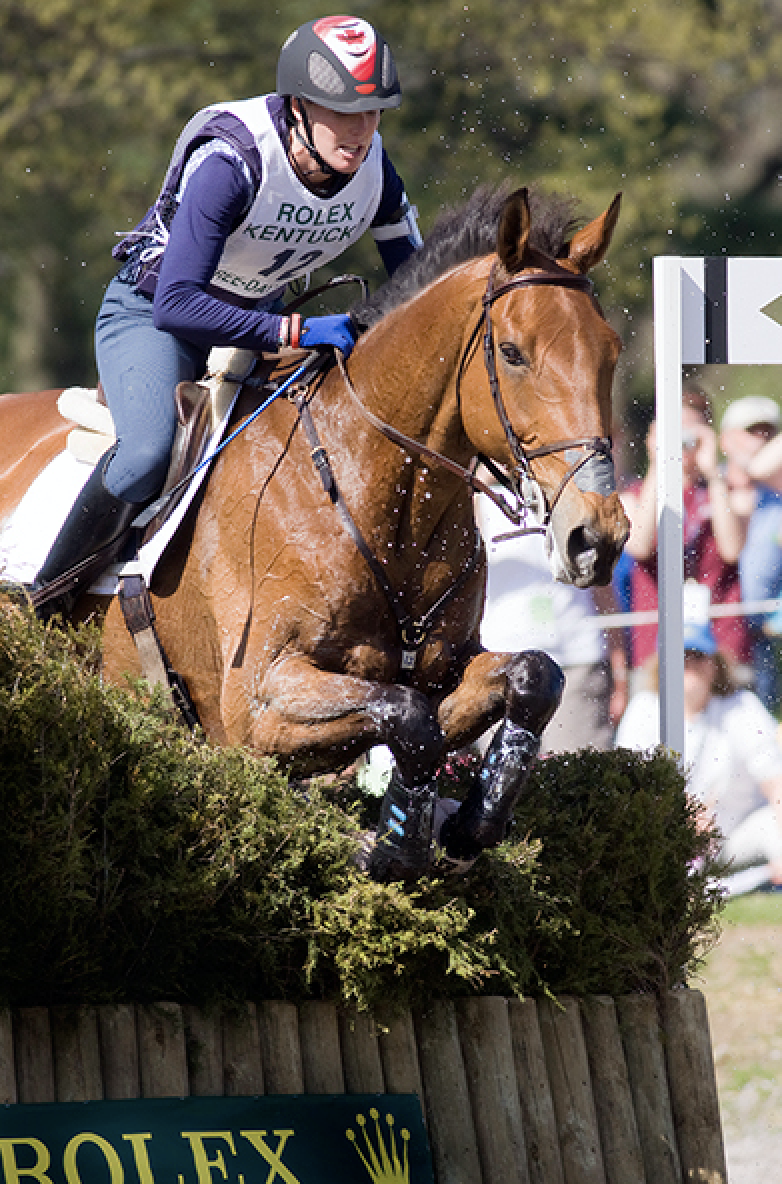
I trusted Bruce because I was more afraid of Bruce than the jumps. I used to wait in line for my turn to go and my little face would be all scrumpled up and the tears would be rolling down my cheeks because I’d be absolutely deathly afraid of the grid he was setting up. He would say, “Listen to my voice! Just kick when I say now.” And he would say, “Now, now!” and I would kick. I’ve got video of me coming straight on down to the camera. My tiny little legs are flying off the horse’s side and I’m kicking him as hard as I can when he tells me to, jumping down at least a 4-foot-3 grid. It’s insane. So he really got me over it.
Because I trust his knowledge and his experience, I know that if I had a problem, he could get on and fix it. And because I was deathly afraid of him (laughs) and inspired by him, I kept going and you need that kind of bond. I’d been spoiled. I’d always had coaches who really wanted it for me genuinely. It wasn’t just their job and something they were paid for, they invested a lot of time and effort and they wanted it as badly as I did and still now Bruce comes to the shows. He came to all my four-stars at Rolex and gives me a pinch for good luck and walks the course with me and will help me no matter what.
Do you have a favorite exercise?
This is an exercise that’s quite simple but addresses a lot of issues and I use on a horse like Woody when he’s tense or losing his rhythm at a horse show in the warmup, all the way down to working my own riders.
It’s changing the posting diagonal on every 4 and you count each time your bum touches the saddle in your rising trot. So each time your bum touches the saddle on the downside of your post in your posting trot, you count 1, 2, 3 and on the fourth, you do sit, sit—which is change your posting diagonal. So if you have a horse that rushes, when you sit, sit, you can use your core and your seat and make the horse wait a little bit with you and encourage him to keep the rhythm the same. If you have a horse that sucks back or is a little bit sluggish, when you sit, sit you can push, push with your core and your leg and seat and that helps keep three-quarters of the horse in front of you and keeps him in front of your leg. Really it’s very good for rhythm. If you have a horse like Woody, who is being tense at a horse show, you change your posting diagonal every four and you can go all over the arena, it doesn’t matter what direction you’re going. You can do it on a circle or a figure of eight or anything like that and it really establishes the rhythm without going to your hand.
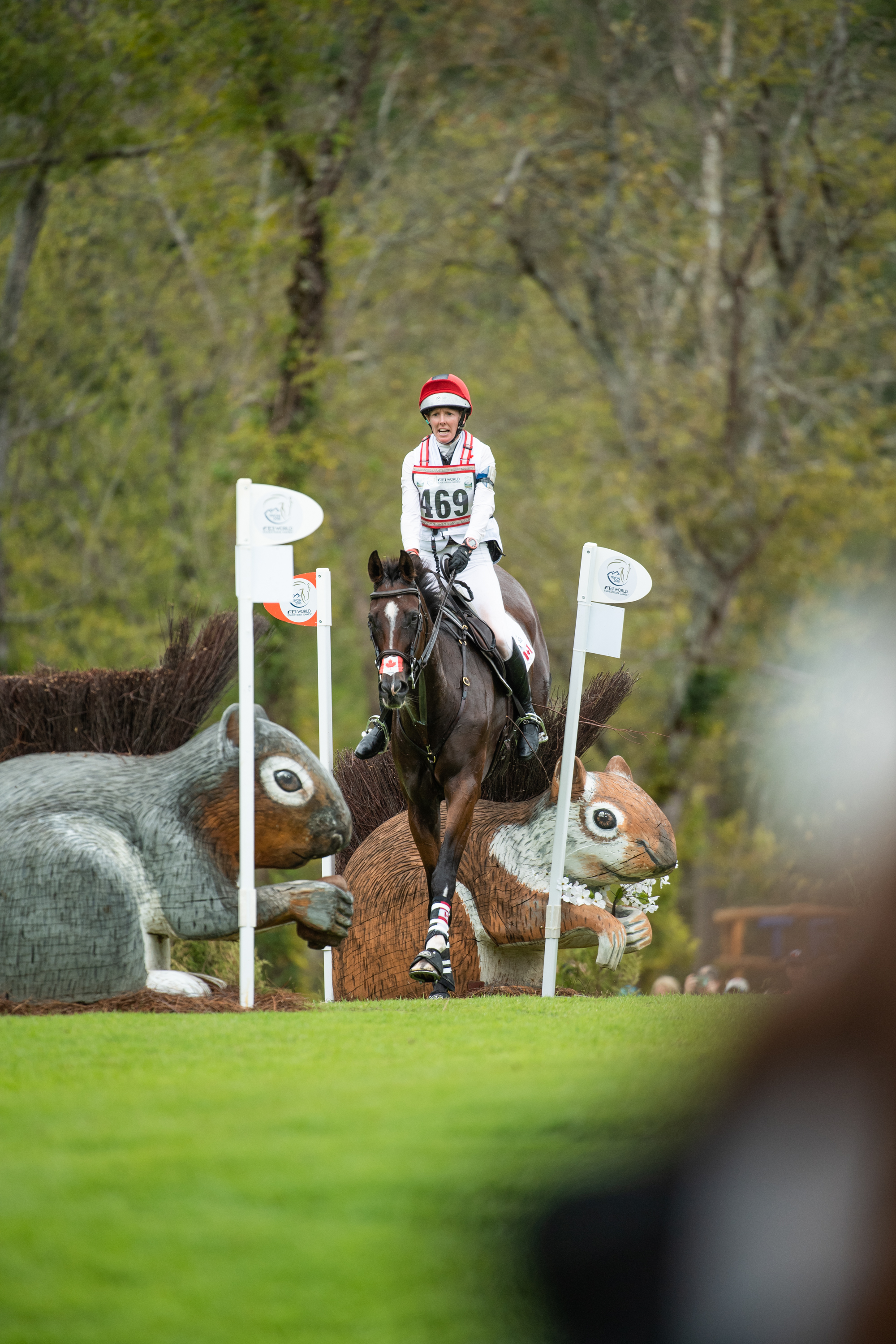
But it really tests the riders—counting and only remembering to count every time you sit and not when you post is really difficult for them. Also, they sit, sitand they end up sitting three times, kind of like when you’re learning to change your posting diagonal and you accidently bump the tack a third time. It gets their minds focused, it gets them counting, it gets them thinking about what’s happening underneath them.
For the horses, it gets them settled, it gets them rhythmical and gets them on your seat and leg and then also it gets you ready for sitting trot. You’ll have to use sitting trot for your test. Maybe you need to use sitting trot for your transitions. Obviously, we have to sit to do any of our transitions. So it starts to get you deeper in the tack and using your aids a little bit better and maybe stronger so that when do you have to go sitting for a sustained period of time, hopefully you’re warmed up to it.
You started your eventing career with a horse named Toby that your mom found and you’ve said that you credit him with making you into the horsewoman that you are today. What did he teach you and how did he teach you?
Toby was my guardian angel. He was the top of his game at Western. Literally, unbeatable. He wasn’t allowed to go to any of the fairs or anything, the only thing he was allowed to go to was Quarterama [a large Quarter Horse breed show in Canada] because he was unbeatable. He didn’t really know how to jump when we bought him and he certainly didn’t frame up that well because he was pure Western trained. So I did do Western with him for the first two years and that’s when I did the trail and the pole bending and all that sort of thing.
At home—my poor mother, later on in life learned about the terrible things that we did with poor Toby. I used to ride him four at a time, with two lead shanks and a halter and four kids, including me. We used to tie my GT Snowracer [a toboggan with steering and brakes] behind him. My mom bought me a vaulting roller when I was a young girl. I put a breastplate on the vaulting roller. I put a bridle on—if I felt like it, but sometimes just a halter and lead shanks. I used two longe lines and clipped them to the vaulting roller. And then I used the handles of the longe lines and tied them to the GT Snowracer. I would ride Toby just behind the vaulting roller and my friends would sit one at a time on the GT Snowracer and I would trot and canter and walk him through the fields and they would get pulled along behind me.
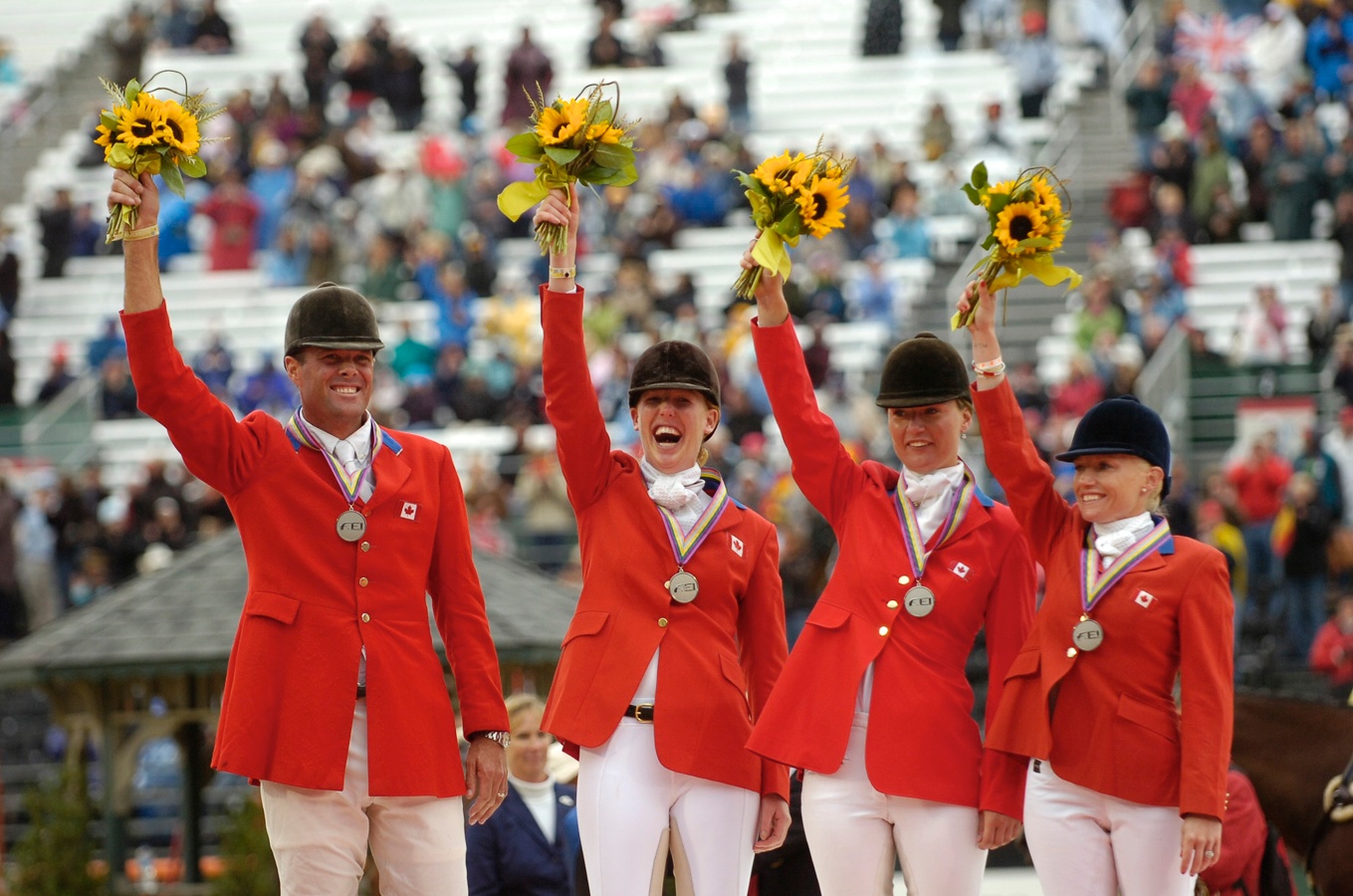
Then in the summertime, we did summer sports. We had an incredible property that had two rivers. One was very wide and the other one was narrow and they were joined together by a lagoon. The lagoon was about chest height on Toby—these are the parts that my mom didn’t know—we would park Toby in the middle of the lagoon and he would just stand there and we would have races swimming underneath him and see who could go the fastest. Just terrible, terrible things. We would jump off his bum like a diving board into the lagoon.
He taught me incredible trust. He was my babysitter. Luckily for me, he was who he was because my mom was running a huge operation with multiple discipline barns—racehorses, jumpers and hunters and and eventers and a breeding program with two stallions and broodmares in the field and competing at a high level, she couldn’t be there all the time.
Do you have any hobbies out of the saddle?
I don’t really have time for them. I love swimming in the summer. I don’t get to do a lot of it in the winter. I love the sea. Up until the last couple of years I hadn’t actually been to the sea very often and certainly not where it was warm. I’d only been to the Scottish sea where it was very, very cold.
Nature, animals—I love seeing different animals. Travel. Luckily that’s a big part of my sport. I think it’s a huge benefit to be able to see all these different places. Other than that, I’m little bit of a lazy bones. Luckily my job requires me for like 12 hours a day, so I don’t get a chance to sit and watch a movie which is kind of my idea of a good day off—just watching a movie and not thinking and not moving.
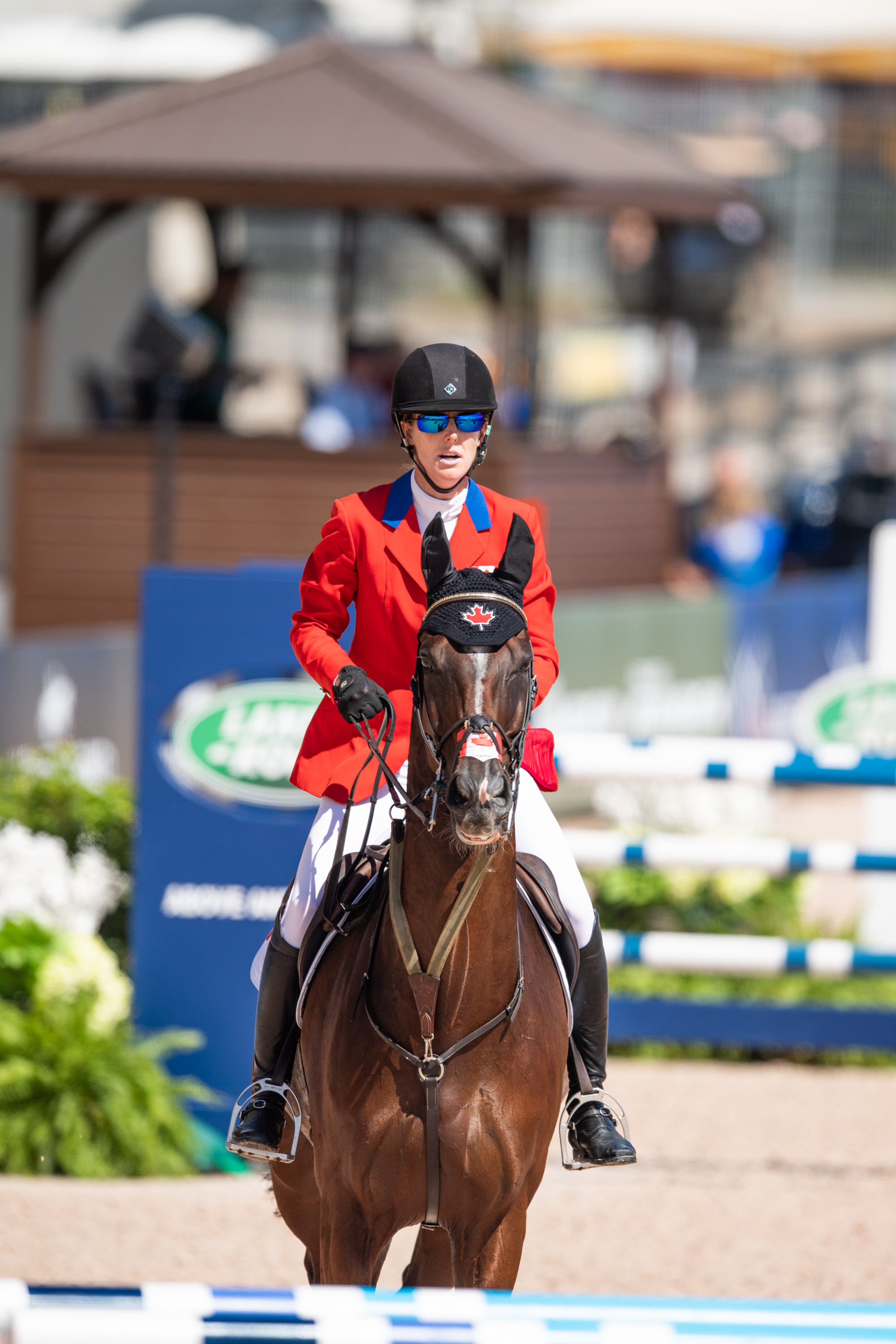
What has made you so successful?
The people who support me. My mom is the head of the ship. If it wasn’t for her, I couldn’t be in Florida. She does all the accounting. In the beginning she was my PR person. She got me most of my sponsors who I still have to this day and that was way back in 2007, probably at Rolex.
And then Anne-Marie Duarte [Selena’s head groom] is my right hand. It’s funny how when you have somebody like that who helps you so much, you all of a sudden realize you can’t do anything for yourself, like ‘Wait a minute, I knew how to do all of this.’ I still braid, I still muck, I still do it all, but things like remembering—she knows everything about Woody—remembering when he needs his supplements or if I have a lesson or what my personal best was last year, because I don’t remember those sorts of things. And she enjoys the process. She’s there to listen when I complain about how I’m getting it all wrong. She jumped up for joy and had tears of joy in her eye at Fair Hill when we did what we set out to do there.
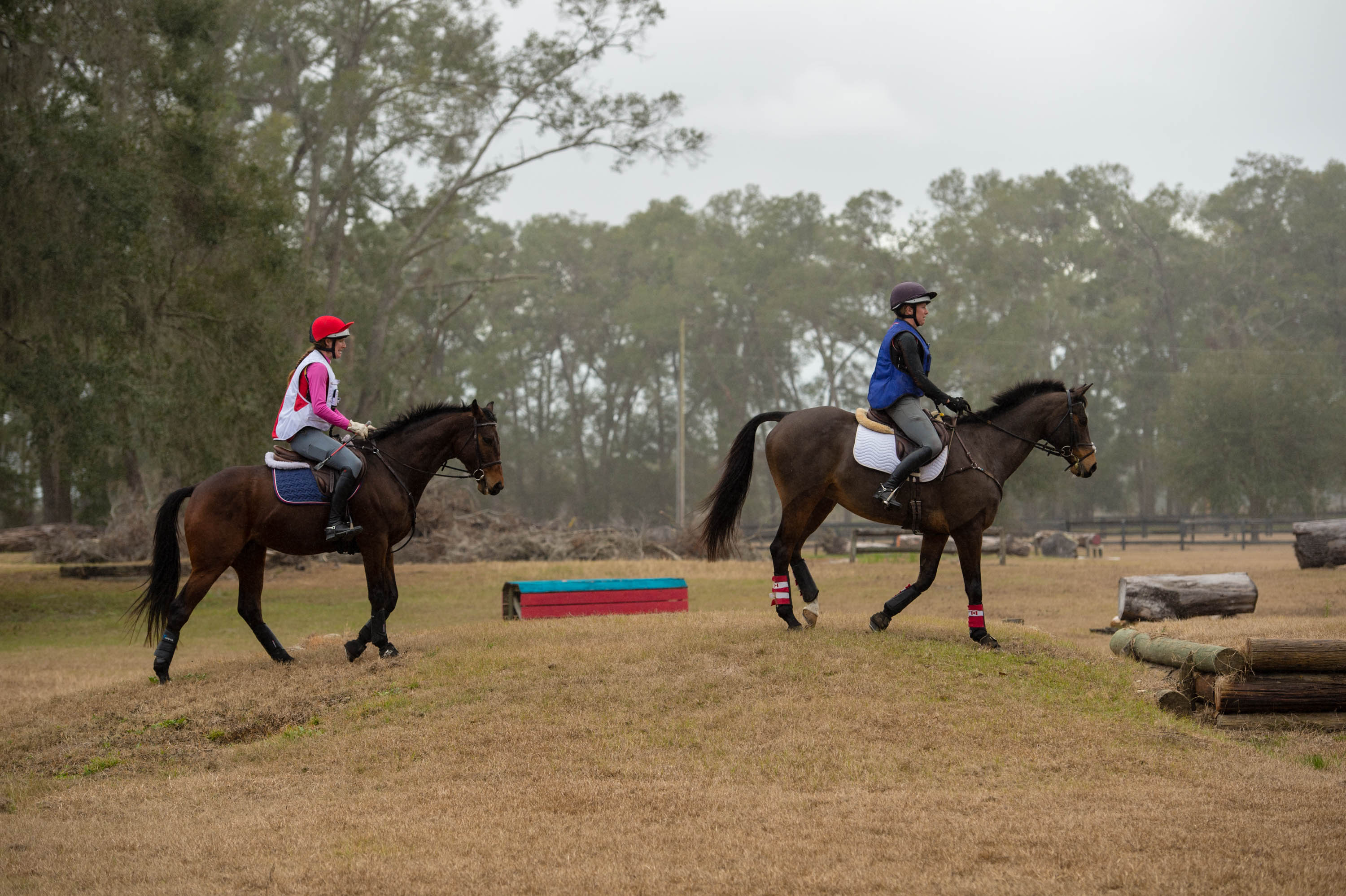
And then my lovely owners—the Rumbles, the Davies, my mom owns the other horses, and my sponsors who believe in me and have me out to do conferences and support me and post pictures of me.
Also, the fans. I’m pretty sure Woody and my dog, Bizzy, have more fans than I do, but now that we have social media they can really reach out to you and they send emails and they send you support and they tell you how great you’re doing and they share your pictures and they share your posts and it all drives you and makes you successful.
For more from Selena, check out our two-part series on her system for jumping cross-country banks smoothly and successfully (featured in the May and June 2018 issues) and her story on how to practice jog-ups.
About the Practical Horseman Podcast
The Practical Horseman podcast, which runs every other Friday, features conversations with respected riders, industry leaders and horse-care experts to inform, educate and inspire. It is co-hosted by Practical Horseman editors Sandy Oliynyk, Emily Daily and Jocelyn Pierce. Upcoming episodes are with eventing legend and Prac columnist, Jim Wofford, Irish show jumper Kevin Babington and hunter rider and trainer Tom Brennan.
Please rate, review and subscribe to the podcast. You can subscribe and listen to our podcast on Apple Podcasts or iTunes, Stitcher, Soundcloud or wherever you get your podcasts.






